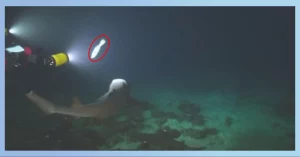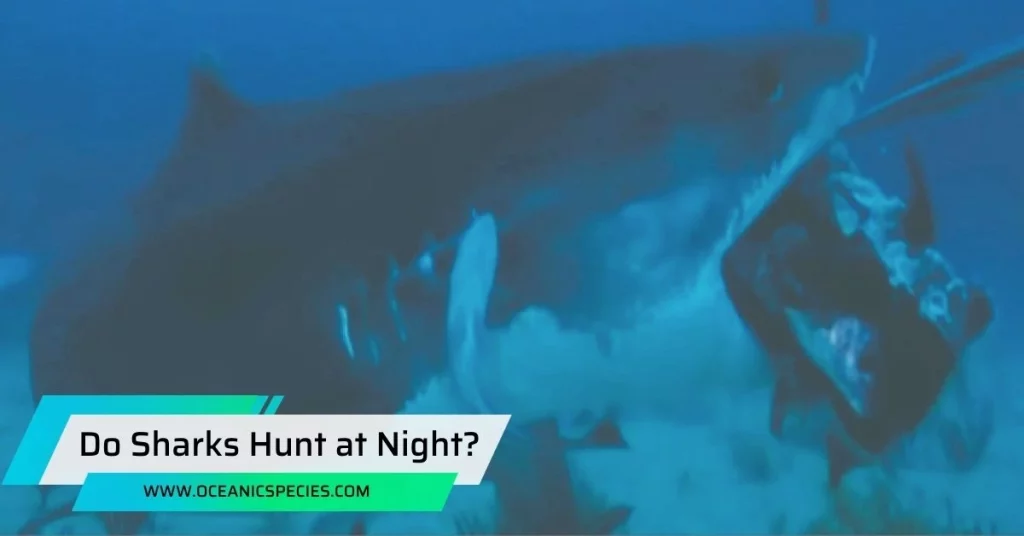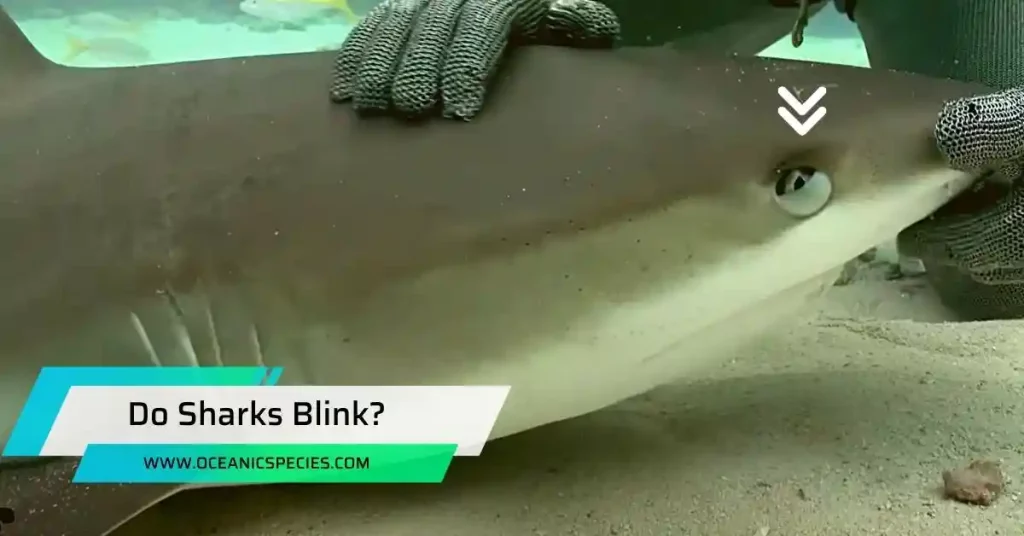Sharks primarily hunt at night, using their keen sense of smell and dark coloration to effectively ambush prey in the cover of darkness. Sharks are known for their prowess as hunters, but have you ever wondered when they prefer to take to the hunt?
It turns out that sharks primarily hunt at night. These stealthy predators are equipped with highly developed senses, including an acute sense of smell, which allows them to detect even the faintest traces of prey in the water. Additionally, many species of sharks have dark coloring on their backs, which camouflages them against the dark ocean depths, making it easier for them to surprise their prey.
This unique hunting strategy allows sharks to efficiently capture their preferred food sources and maintain their position as one of the ocean’s top predators.
Evolutionary Adaptations For Night Hunting
One aspect of their behavior that has intrigued scientists is their hunting patterns, particularly at night. In this section, we will explore the evolutionary adaptations that have allowed certain shark species to become successful nighttime hunters.

Shark Species That Have Adapted To Hunting At Night
Some shark species have specifically evolved to hunt during the nighttime. These species have unique traits and features that give them an advantage in low-light conditions. Examples of shark species that are known to be adept at nighttime hunting include the great white shark, tiger shark, and hammerhead shark.
Unique Visual And Sensory Adaptations For Night Hunting
Sharks that hunt at night have developed special adaptations to enhance their vision and sensory abilities. One important adaptation is the presence of tapetum lucidum, a reflective layer behind the retina that boosts the amount of light available to the photoreceptor cells. This adaptation allows sharks to maximize their visual acuity in dark environments.
Additionally, some shark species possess a greater number of rod cells in their eyes, which are more sensitive to low light levels. Sharks also have a heightened sense of smell, which helps them detect prey in the darkness. They rely on their electroreceptive organs called ampullae of lorenzini to detect the electromagnetic fields produced by the movements of potential prey.
How Sharks Use Their Lateral Line System To Locate Prey In The Dark
Sharks have a lateral line system, which is a series of sensory organs along the sides of their bodies. This system enables them to detect changes in water pressure and movement, allowing them to locate prey even in the dark. As water flows over the sensory cells in the lateral line system, the shark can sense vibrations and disturbances caused by the movement of nearby prey. This ability helps sharks pinpoint the exact location of their prey, giving them a greater chance of a successful hunt.
Factors Influencing Shark Feeding Behavior At Night
With sleek bodies and sharp teeth, sharks are often portrayed as fierce predators that strike fear into the hearts of swimmers and surfers. But do sharks really hunt at night?
In this section, we will delve into the factors that influence shark feeding behavior at night and uncover the truth behind this mysterious question.
Influence Of Moonlight And Other Environmental Factors On Shark Hunting Patterns
Moonlight plays a crucial role in shark hunting patterns at night. Here are some key points to consider:
- Some shark species are more active during full moon nights due to the increased visibility provided by the moonlight.
- Moon phases can affect the availability of prey, as certain species migrate or spawn during specific lunar stages.
- However, not all shark species rely on moonlight for hunting. Some possess highly developed senses that allow them to locate prey even in very low-light conditions.
Relationship Between Shark Migrations And Nocturnal Feeding
Shark migrations have been closely linked to their feeding behavior at night. Consider the following points:
- Many shark species undertake long-distance migrations, seeking out areas with abundant food sources.
- These migrations are often timed to coincide with the movement of prey, which may also occur at night.
- While not all shark species exhibit migratory behavior, those that do are more likely to engage in nocturnal feeding to maximize their chances of finding food during their journey.
Impact Of Prey Availability And Behavior On Shark Feeding Habits At Night
The availability and behavior of prey species greatly influence shark feeding habits at night. Take note of the following:
- Certain prey species are more active during the night, making them prime targets for shark predation.
- Prey behavior, such as aggregating in large numbers or exhibiting different movement patterns, can attract sharks to hunting grounds.
- Sharks possess highly developed sensory systems that enable them to detect the electrical signals emitted by prey, enhancing their ability to locate food sources.
Influence Of Moonlight On Shark Feeding
Sharks are known to have a complex relationship with the moon, and their hunting behavior is no exception. The different phases of the moon can have a significant impact on when and how sharks hunt their prey. Let’s take a deeper look at this fascinating phenomenon. Sharks have a heightened sense of smell which plays a vital role in their hunting strategy. During certain phases of the moon, their ability to detect scents and locate prey is enhanced, while at other times, it may be more challenging.

The moon’s gravitational pull also affects the movement of ocean tides, which can expose new areas for hunting or cause prey to gather in specific locations. Sharks are known to take advantage of these changes to adapt their hunting tactics. The moon’s illumination influences the visibility of both sharks and their prey. In well-lit conditions, sharks can rely on their keen eyesight to spot potential targets, while during darker nights, they might have to rely more on other senses.
How Moonlight Affects Prey Visibility And Shark Ambush Tactics
Moonlight can play a crucial role in determining prey visibility and the success rate of shark hunts. Here are some key points to consider:
- Moonlight reflects off the surface of the water, allowing sharks to spot silhouettes and movements of potential prey. This increased visibility can give sharks an advantage, particularly in shallow waters or near the surface.
- Some species of sharks, such as the great white shark, prefer to ambush their prey from below. In moonlit conditions, the prey is more likely to cast a shadow, making it easier for sharks to hide and launch surprise attacks.
- On the other hand, during nights with minimal moonlight, prey may be less visible, giving them a better chance to evade shark attacks. This can result in sharks adjusting their hunting behavior, being more selective about their targets, or relying on alternative senses like hearing or electroreception.
- The brightness of the moon also impacts the hunting depth of sharks. In well-lit nights, sharks may be more active near the surface since that’s where the light is strongest. Conversely, during darker nights, sharks may dive deeper to find prey and reduce their exposure to potential threats.
Case Studies On The Correlation Between Moonlight And Successful Shark Hunts
Several case studies have delved into the relationship between moonlight and the success of shark hunts. These studies provide valuable insights into how sharks adapt their hunting strategies based on lunar conditions. Consider the following:
- A study conducted on whitetip reef sharks in the indian ocean found that their hunting behavior was significantly influenced by moonlight. The sharks were more active and engaged in successful hunts during well-lit nights compared to darker nights.
- Researchers studying the feeding habits of tiger sharks observed a similar pattern. They discovered that moonlit nights correlated with an increased number of successful hunting events, suggesting that moonlight enhances the sharks’ predatory abilities.
- In contrast, a study examining the hunting behavior of great hammerhead sharks found that their success rate did not show a clear correlation with moonlight conditions. These sharks seemed to rely more on other factors, such as prey availability and behavioral patterns.
- These case studies highlight the intricate balance between moonlight and shark hunting behavior. While sharks are undoubtedly influenced by lunar conditions, their responses may vary based on species and environmental factors.
Relationship Between Shark Migrations And Nocturnal Feeding
Understanding this relationship can provide insight into their behavior and ecological role in marine ecosystems. Let’s explore the key points related to shark migrations and how they are connected to their nocturnal feeding habits.
Migration Patterns And Their Effect On Shark Feeding Habits
Sharks have intricate migration patterns that are influenced by various factors such as food availability, temperature changes, and breeding cycles. These migrations can span thousands of miles and are essential to their survival and reproduction. Migration patterns play a vital role in determining the feeding habits of sharks. As they move to different regions, their food sources may change, forcing them to adapt their feeding behavior.
Sharks that undertake long-distance migrations often display specific feeding strategies during their journey, including feeding at night. Nocturnal feeding allows them to take advantage of different prey species that are more active in darkness. During nocturnal feeding, sharks such as the great white shark, tiger shark, and bull shark use their keen senses, especially their ability to detect electromagnetic fields, to locate and prey upon unsuspecting marine organisms.
Case Studies On Shark Species Known For Nocturnal Feeding During Migrations
The great white shark, famously known for its role in the movie jaws, is a prime example of a shark species known for its nocturnal feeding habits during migrations. Due to their long-distance travels, they often encounter different prey species in various regions, prompting them to feed at night when their prey is more abundant.
The tiger shark is another species that exhibits nocturnal hunting behavior while on the move. These solitary predators cover vast distances, following prey migrations and taking advantage of the cover of darkness to launch surprise attacks on their victims.
Bull sharks, which are known for their aggressiveness and ability to thrive in both saltwater and freshwater environments, also exhibit nocturnal feeding habits during their migrations. This behavior allows them to capitalize on the hunting opportunities presented by changing habitats.
Environmental Triggers That Initiate Shark Migrations And Feeding Behavior
Environmental factors such as temperature, salinity, availability of food, and mating opportunities play a crucial role in initiating shark migrations and subsequent feeding behavior. Changes in water temperature can influence the migration of certain shark species, as they seek warmer or cooler waters for breeding or feeding purposes.
The availability and abundance of prey in different regions act as powerful triggers for shark migrations. As their food sources move in response to seasonal changes or oceanic currents, sharks follow these movements in search of sustenance. Breeding cycles also impact shark migrations and feeding behavior. Some shark species travel long distances to reach specific mating grounds, altering their feeding patterns along the way.
Impact Of Prey Availability And Behavior On Shark Feeding At Night
Sharks are undoubtedly fascinating creatures that strike fear into the hearts of many people. One question that often arises is whether sharks hunt at night. To understand this behavior, it’s important to examine the impact of prey availability and behavior on shark feeding during nighttime hours.

Prey Species That Are More Active At Night And Attract Sharks
Many prey species exhibit increased activity levels under the cover of darkness, making them more vulnerable to predation by numerous nocturnal hunters, including sharks. Some examples of prey species that are more active at night and can attract sharks include squids, small fish, and crustaceans. During the nighttime, these prey species take advantage of the reduced visibility to avoid their own predators, but they unknowingly expose themselves to potential shark attacks.
Scent And Vibrations As Triggers For Shark Feeding Behavior
Sharks possess an exceptional sense of smell, which enables them to detect even minute amounts of blood or other scents from great distances. When prey species are more active at night, they tend to release more scent and bioelectric signals, attracting sharks in the vicinity. These signals, combined with the vibrations created by the movement of prey, act as powerful triggers for sharks, initiating their feeding behavior.
How Prey Behavior Influences Shark Hunting Techniques At Night
Prey behavior strongly influences the hunting techniques employed by sharks during the night. Some prey species display schooling or aggregation behavior at night, forming tight groups to enhance their chances of survival. However, this behavior inadvertently makes them more susceptible to shark attacks. Sharks take advantage of this prey behavior by utilizing stealth and ambush strategies, swiftly penetrating the prey’s defensive movements. Some shark species, like the great white shark, may even breach the surface to surprise their prey from below, capitalizing on their reduced visibility in darker waters.
Shark Feeding Strategies At Night
Sharks, commonly known as the iconic predators of the ocean, have unique hunting strategies that vary based on time of day and environmental conditions. While most shark species are known to be primarily active during the day, there are certain species that prefer hunting under the cover of darkness.
In this section, we will explore the fascinating world of shark feeding strategies at night.
Different Hunting Techniques Employed By Sharks In Darkness
Sharks have evolved various methods to capture their prey during the night, which differ from their daytime hunting behaviors. Here are some key points to understand about their nocturnal hunting techniques:

- Ambush tactics: Certain shark species, such as the nurse shark, employ an ambush strategy when hunting at night. They patiently lie still on the ocean floor or hide in crevices, waiting for unsuspecting prey to come near. Once the prey is within striking distance, the shark swiftly seizes its meal.
- Active hunting methods: In contrast to the ambush tactics, some shark species like the great white shark and the mako shark actively search for food during the night. Using their acute senses, these sharks patrol areas known to have high prey activity. They rely on their exceptional vision and electroreception to detect the slightest movements of their prey, enabling them to initiate swift and powerful attacks.
Case Studies On Specific Shark Species And Their Unique Nocturnal Feeding Strategies
The fascinating world of nocturnal shark feeding becomes even more captivating when we examine the behaviors of specific shark species. Here are a few case studies that shed light on the unique strategies employed by these sharks:
- The great white shark: Although primarily known as a diurnal predator, the great white shark occasionally hunts at night. It takes advantage of the low light conditions to approach its prey stealthily. The great white also utilizes its excellent night vision to its advantage, aiding in successful nocturnal hunting endeavors.
- The bull shark: This highly adaptable shark species is known for its ability to survive in both freshwater and saltwater environments. At night, the bull shark takes advantage of its electro-receptive senses to locate prey, using specialized ampullae of lorenzini. This unique adaptation allows the bull shark to detect the electrical impulses emitted by marine animals, making it an efficient nocturnal hunter.
- The tawny nurse shark: As mentioned earlier, the tawny nurse shark employs an ambush strategy when hunting at night. By blending with its sandy or rocky surroundings, this species remains virtually invisible to its unsuspecting prey. Once the perfect opportunity arises, the tawny nurse shark swiftly strikes, taking its prey by surprise.
Ambush Tactics Used By Sharks
In this section, we will delve into the ambush tactics that sharks employ to surprise their prey under the cover of darkness.
How Sharks Use Stealth And Camouflage To Surprise Their Prey
Sharks are masters of stealth, utilizing their keen senses to their advantage in dark and murky waters. These apex predators have evolved over millions of years to possess highly specialized adaptations that allow them to remain hidden from their unsuspecting prey. By blending in with their surroundings, sharks can effectively conceal their presence and strike when least expected. Their unique skin patterns, ranging from mottled camouflage to dark dorsal coloration, aid in their ability to remain unseen.
Examples Of Shark Species That Rely On Ambush Hunting At Night
The great white shark is a prime example of a species that uses ambush tactics to hunt its prey. Known for its stealthy approach, the great white employs a combination of patience, speed, and surprise to catch its victims off guard. Another shark that relies on ambush hunting is the nurse shark. This nocturnal predator lies motionless on the seafloor, blending in with the sandy substrate as it awaits its prey. Bull sharks, with their powerful bodies and ability to tolerate freshwater, are also known to employ ambush techniques, particularly in rivers or estuaries.
Characteristics Of Prey Hunted By Sharks Using Ambush Tactics
Sharks that use ambush hunting typically target unsuspecting prey that is smaller than themselves. These predators rely on the element of surprise, pouncing on their victims with incredible speed and agility. Prey species often include fish, squid, crustaceans, and even seals or sea lions in the case of larger sharks. The ability to surprise their prey increases the chances of a successful hunt, ensuring a constant supply of sustenance for these apex predators.
Active Hunting Strategies Of Sharks At Night
Contrary to popular belief, sharks don’t simply call it a day and retreat to their homes at night. In fact, many species of sharks are active hunters during the dark hours, employing various strategies to catch their prey.
In this section, we will explore the active hunting strategies of sharks at night.
Breeding And Feeding Grounds That Attract Predators And Prey In The Dark
Sharks are drawn to breeding and feeding grounds that come alive at night. These areas serve as hotspots for both predators and prey. The cover of darkness offers a sense of security to certain species, making it an opportune time for sharks to take advantage of their vulnerability. The abundance of nutrients and resources in these areas creates a feeding frenzy, as sharks compete for their meal under the cloak of darkness.
How Sharks Use Their Speed And Agility To Catch Fast-Moving Prey At Night
Sharks are renowned for their remarkable speed and agility, traits that become even more crucial during night hunts. In low-light conditions, sharks rely heavily on their keen sense of smell and electromagnetic receptors to detect the minute electrical signals emitted by their prey. Once they’ve identified their target, sharks burst into action, utilizing their streamlined bodies and powerful tails to swiftly close the distance. Their sharp teeth and strong jaws allow them to deliver a forceful bite, immobilizing their prey and securing a meal.
Hunting In Groups: Advantages And Tactics Used By Social Sharks In The Dark
While some sharks prefer solitary hunting, others have evolved to become social predators, maximizing their chances of success in the dark. Hunting in groups provides several advantages, such as increasing the collective sensory abilities of the sharks involved. Coordination and communication are key tactics used by social sharks during night hunts. They employ various signals and body movements to remain synchronized and effectively corner their prey. By working together, social sharks create a surround-and-conquer strategy, encircling their prey and reducing the chances of escape.
Frequently Asked Questions
What Is The Advantage Of Sharks Hunting At Night?
Hunting at night gives sharks an advantage as most of their prey is more active during this time. Their prey’s reduced visibility and heightened sense of fear make them easier targets for the stealthy hunters.
How Do Sharks Hunt In The Dark?
Sharks use their excellent night vision, enhanced by a layer of cells called the tapetum lucidum, to see in low light conditions. They rely on their heightened senses of smell and hearing to detect the presence of potential prey, allowing them to strike effectively in the dark.
What Types Of Hunting Strategies Do Sharks Employ At Night?
Sharks employ a variety of hunting strategies at night, including ambush attacks, stealthy approaches, and coordinated group hunting. Some species also use bioluminescent lures to attract unsuspecting prey closer to their hunting range.
What Are The Most Common Prey For Nocturnal Sharks?
Nocturnal sharks commonly prey on smaller fish, squids, crustaceans, and other marine creatures that are more active at night. Some species also feed on seabirds and larger animals like seals and sea lions when the opportunity arises.
Conclusion
It is clear that sharks do exhibit hunting behaviors at night. Their highly specialized sensory systems enable them to navigate and locate prey as they prowl the depths under the cover of darkness. The research and anecdotes presented in this blog post demonstrate the various strategies and adaptations that sharks employ to hunt effectively during nighttime hours.
Understanding these nocturnal hunting patterns is crucial for both researchers and the general public alike, as it provides valuable insights into the behavior and ecology of these awe-inspiring creatures. Whether it is the great white stealthily stalking its prey or the hammerhead relying on its unique head shape to enhance visual acuity, sharks have developed remarkable adaptations to succeed in their nocturnal hunting endeavors.





